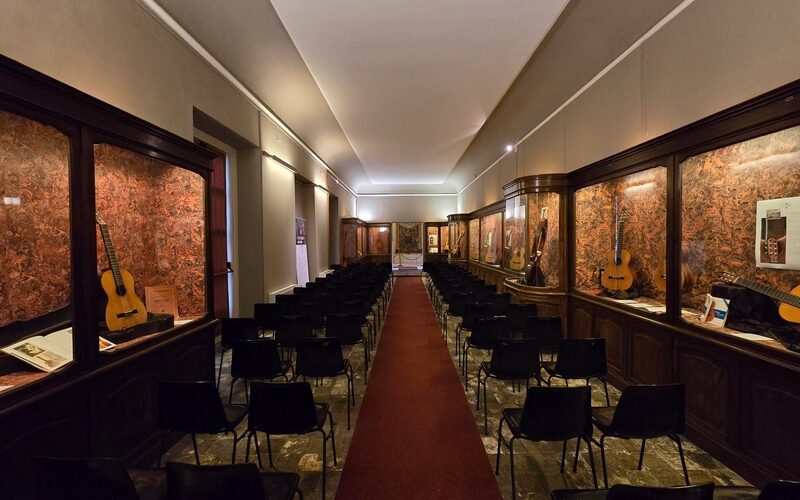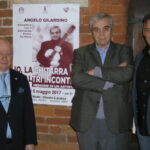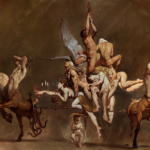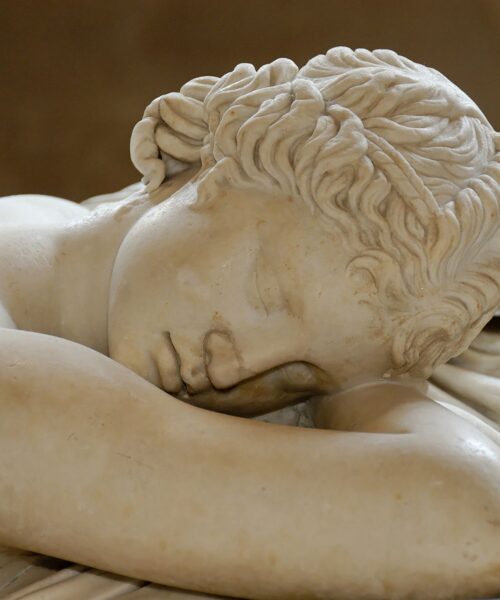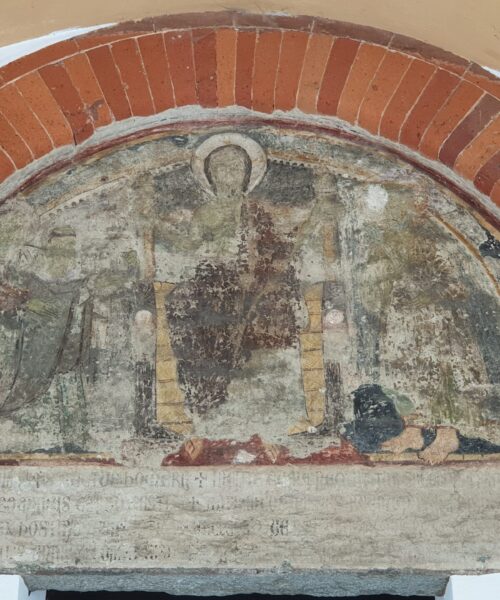In a quiet room of the Museo Leone in Vercelli, known as the “Sala delle Cinquecentine,” an intimate dialogue unfolds not between people, but between guitars and observers. This is the exhibition “The Singing Wood,” where artisanal craftsmanship meets personal history. Of the twenty-six guitars on display, six come from the personal collection of the renowned Maestro Angelo Gilardino, known not only for his compositions but also for his research on instruments capable of translating the poetry of his musical visions into sound.
The remaining twenty guitars, kindly loaned by passionate collectors like Lorenzo Frignani, custodian of the Gilardino Collection, and notable figures such as Luigi Biscaldi, Mario Grimaldi, Fabio Ardino, Barbara Ariata, Michele Biggioggero, and the famous director Marco Tullio Giordana, represent a span of styles, evolutions in craftsmanship, and diverse personalities. These wooden works of art, embodying centuries of evolution and refinement, are now revealed to the public, telling stories that extend far beyond the lives of their illustrious owners.
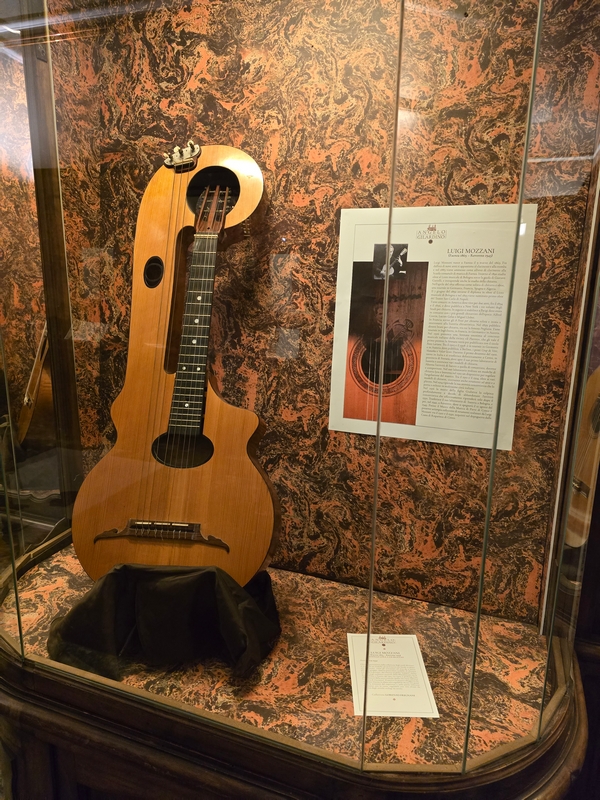
The wood of the guitars displayed here has resonated under the fingers of virtuosos, absorbed the vibrations of prestigious concert halls, and witnessed epochal changes in the world of music. These are not mere sound boxes but living archives of musical culture, portals through which we can hear the echoes of past eras.
The six guitars from Gilardino’s collection, in particular, represent a fundamental chapter in this narrative: they have been the companions of an artist in his creative and professional journey. They have been his interlocutors, his muses, and through their strings, the genius of a man who knew how to weave notes of rare beauty while exploring uncharted territories has spread.
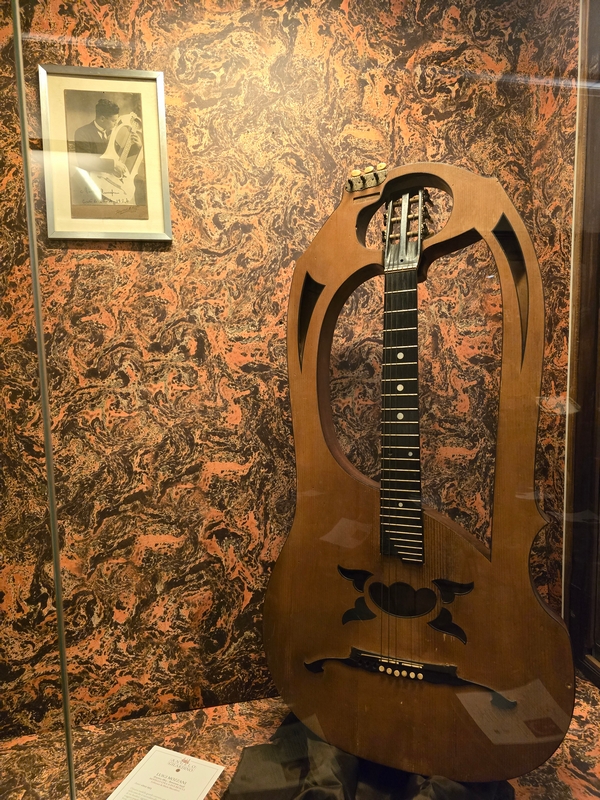
These instruments, carved and chiseled with dedication by expert hands, thus become ambassadors of a tradition that skillfully intertwines craftsmanship, aesthetics, and acoustics. Just as each guitar is a canvas where different painters have left their mark with various techniques, colors, and shades, so too does each guitar reflect the building philosophy and personal touch of those who have owned and played them.
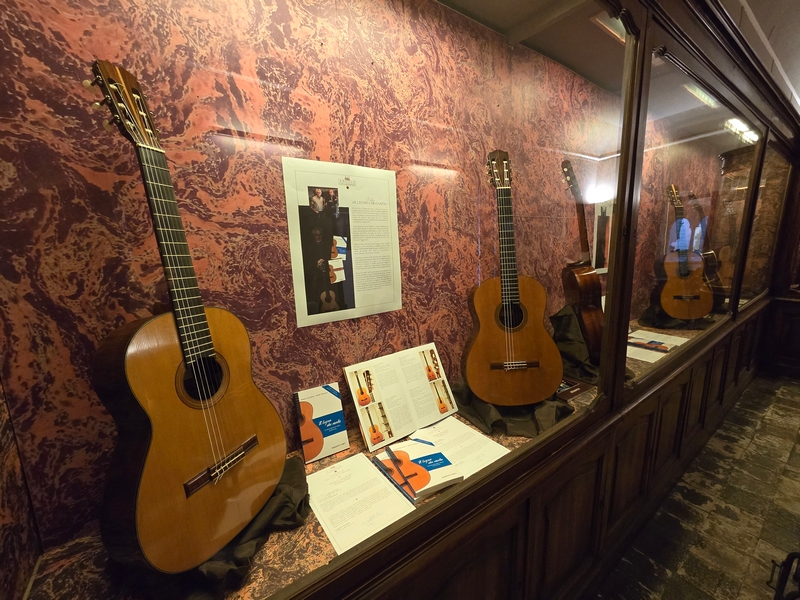
But this is not merely an exhibition of beautiful musical instruments; it is an invitation to recognize these creations as works of art that breathe through the hands of their masters. The exhibited guitars, twenty-six witnesses of timeless mastery, reveal a unique intersection between music and visual art. Every curve, every angle, every joint is not only the result of a quest for acoustic perfection but also for aesthetic beauty.

How can we say that Michelangelo did not sculpt notes into David’s marble? That Van Gogh did not paint melodies in the wheat fields? The guitars on display evoke the immortality of Phidias’ sculptures, each taut string ready to become a singing muse. They are like Caravaggio’s paintings where the tones are not only seen but heard. Each instrument is a material composition that, once set in motion by expert hands, transforms into a harmonic composition.
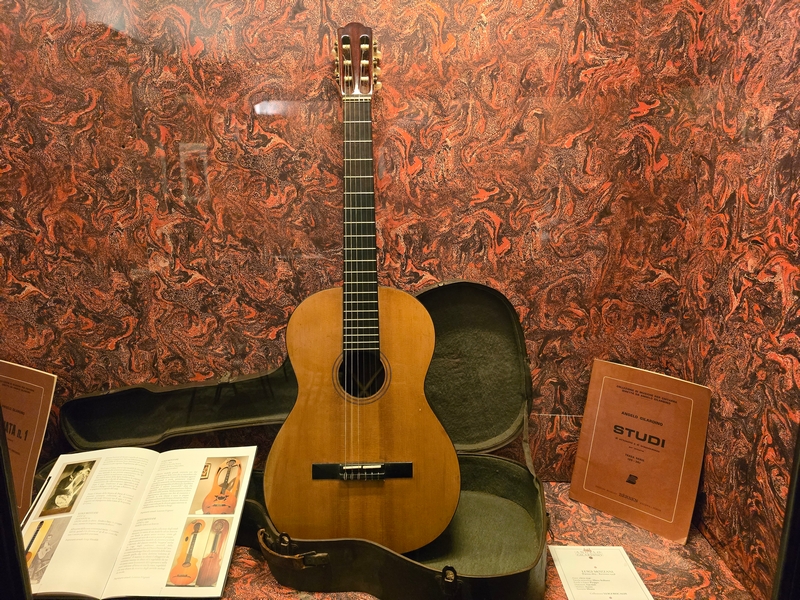
In the skillful woodworking, in the intertwining of strings, in the engineering of bridges and fingerboards, lies a fascinating duality: an instrument is a statue until the silence is broken by a note. At that moment, the work of art is completed with an expression that is not only visual but also acoustic. It is art made audible, design turned into sensation.
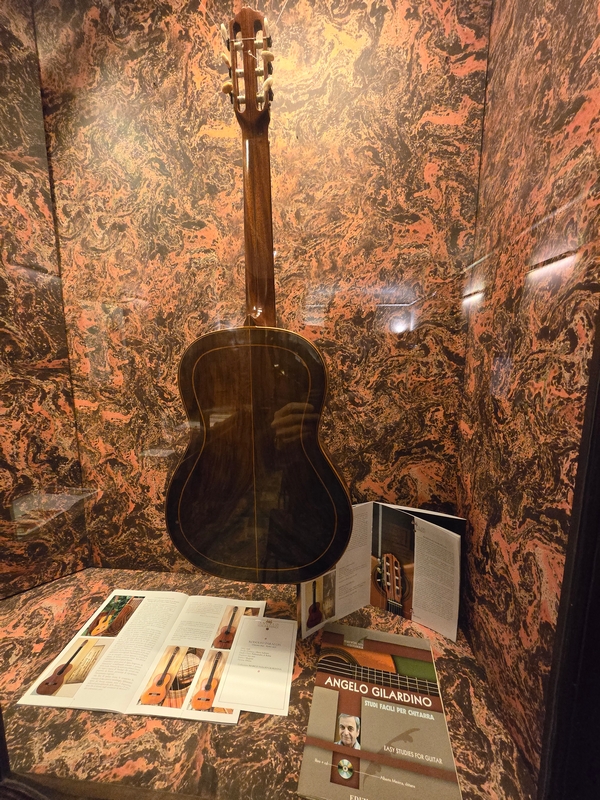
Just as a painter’s brushstrokes bring landscapes and portraits to life, the notes emerging from these guitars create emotional landscapes, portraits of the soul. Their design, the result of centuries of refinement and perfection, embodies not only the history and culture of a people but also technology and innovation.
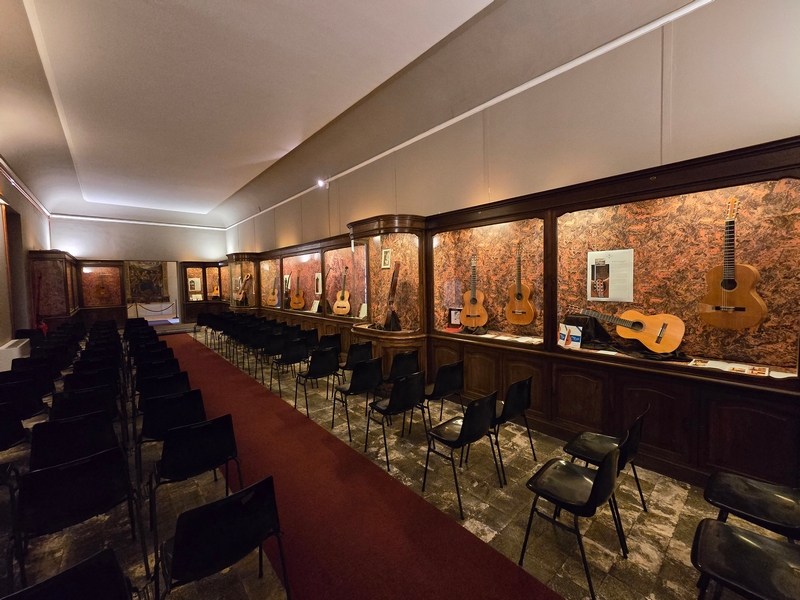
These musical instruments are not just objects; they are alchemies of form and function that allow music to be born and live. They are bridges between the tangible world and the realm of emotions, between what is static and what flows. They are works of art that enable the birth of other works of art: the melodies that will be passed down through the centuries.
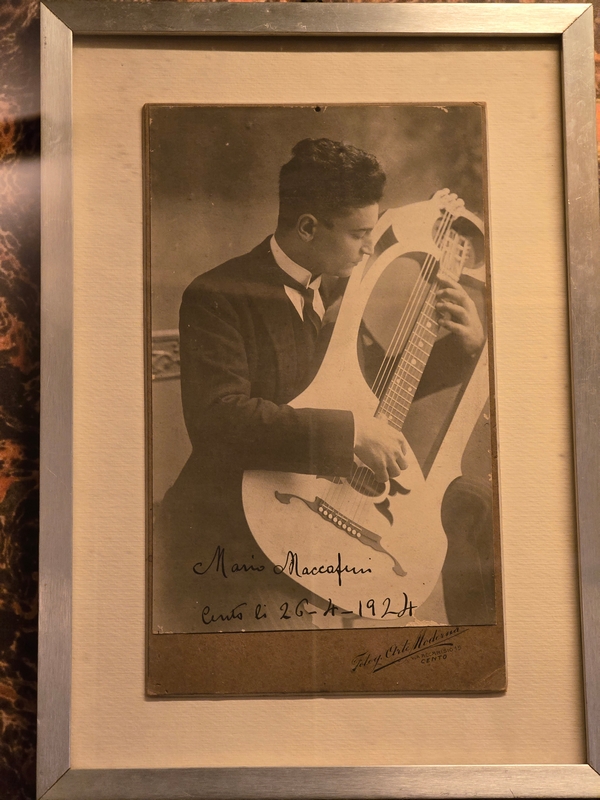
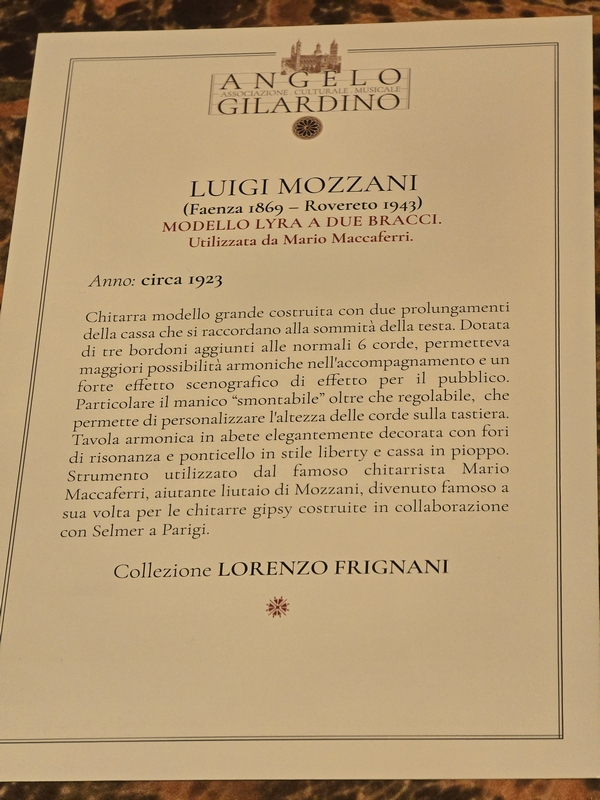
Thus, the exhibition “The Singing Wood” invites us to reconsider musical instruments not just as tools for making music but as true artistic treasures. The design, craftsmanship, history, and melodies that these instruments have inspired and continue to inspire make them irreplaceable witnesses of a cultural heritage that must be preserved and celebrated. They are the silent guardians of musical potential, waiting only for a master to awaken their soul.
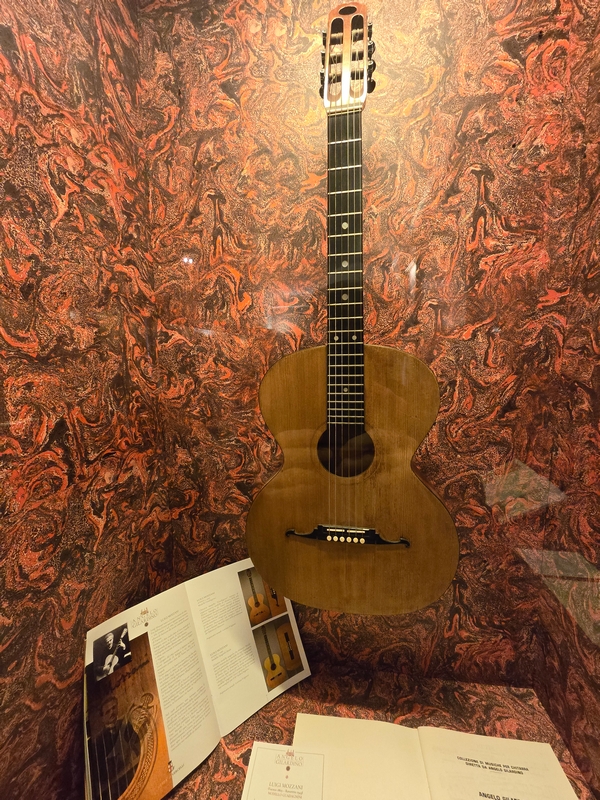
The exhibition will be open until May 31, 2024, and I assure you, dear readers, that letting yourself be enchanted by the stories these guitars have to tell is an experience that goes beyond listening. It is an immersion into the very essence of human creativity, where each instrument is a bridge between creator and viewer, between past and present, between visual and auditory art.

